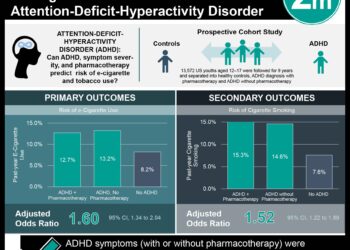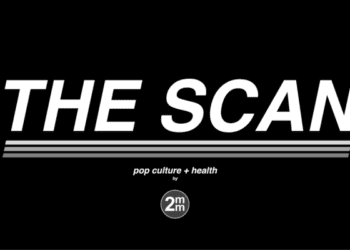Long-term users of e-cigarettes have decreased carcinogen and toxin levels compared to users of combustible cigarettes
1. Former smokers who used only e-cigarettes or only nicotine replacement therapy (NRT) for ≥6 months (long-term) were found to have generally similar levels of nicotine but considerably reduced levels of measured carcinogens and toxins compared to users of combustible cigarettes (either solely or along with e-cigarettes or NRT).
2. The data suggests that although e-cigarettes may be useful as an aid for smokers who have struggled to quit by other means, health benefits are not obtained unless smoking of combustible cigarettes is ceased completely.
Evidence Rating Level: 4 (Below Average)
Study Rundown: E-cigarettes have quickly gained popularity, but there are concerns about the possible negative health effects of e-cigarettes. This cross-sectional study compared participant data from 5 groups: users of only combustible cigarettes, former smokers with long-term use of only e-cigarettes or only NRT, and long-term users of both combustible cigarettes and e-cigarettes or both combustible cigarettes and NRT. Former smokers with long-term use of only e-cigarettes or only NRT were found to have generally similar levels of nicotine compared to users of combustible cigarettes. Considerable reduction in levels of measured carcinogens and toxins were found in long-term users of only e-cigarettes or only NRT compared to those who used combustible cigarettes (either solely or along with e-cigarettes or NRT). The data suggests that although e-cigarettes may be useful as an aid for smokers who have struggled to quit by other means, health benefits are not obtained unless smoking of combustible cigarettes is ceased completely.
A strength of this study is that it is the first study to directly compare nicotine, carcinogen, and toxin metabolite levels in long-term users of e-cigarettes or NRT. Limitations of the study include a self-selected sample, a sample size that may not be large enough to capture any important small differences in levels of exposure, lack of indirect exposure assessment, and analysis limitations caused by spot sampling and the number of available biomarkers.
Click to read the study, published today in Annals of Internal Medicine
Relevant Reading: Safety evaluation and risk assessment of electronic cigarettes as tobacco cigarette substitutes: a systematic review
In-Depth [cross-sectional study]: In London from January 2014 to June 2014, researchers collected data from 181 participants divided into the following 5 groups (n = 36 to 37 per group): users of only combustible cigarettes, former smokers with ≥6 months use of only e-cigarettes or only nicotine replacement therapy (NRT), and users of both combustible cigarettes and e-cigarettes or both combustible cigarettes and NRT for ≥6 months. Data included questionnaires completed by the participants and laboratory analysis of breath, saliva, and urine samples. In general, participants were mainly male, white, and young with at least a high school education. There were no distinct differences between groups in nicotine intake biomarkers in saliva or urine. Metabolite levels for tobacco-specific N-nitrosamines (TSNAs), including 4-(methylnitrosamino)-1-(3pyridyl)-1-butanol (NNAL), a carcinogenic metabolite, were significantly lower in e-cigarette only or NRT only users compared to the three other groups (p < 0.001). NNAL levels were lowest in users of only e-cigarettes, with a 97% reduction compared to users of only combustible cigarettes. Levels of volatile organic compounds (VOCs) were also significantly lower in users of only e-cigarettes or only NRT compared to the three other groups (p < 0.001).
Image: CC/Wiki
©2017 2 Minute Medicine, Inc. All rights reserved. No works may be reproduced without expressed written consent from 2 Minute Medicine, Inc. Inquire about licensing here. No article should be construed as medical advice and is not intended as such by the authors or by 2 Minute Medicine, Inc.









